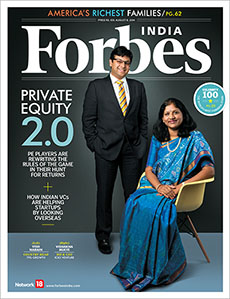
An India Model for Private Equity
Being a passive investor does not often work. 'Equity' may be the suffix in PE, but in India, some players have learnt to dabble in debt too
Necessity, they say, is the mother of invention. The big boys of global private equity (PE) came in droves about a decade ago, assuming that there must be easy moolah in a booming economy. Some did find a treasure trove, but others found that India is a different place. Despite having completed one major cycle of investments, returns have been few and far between. The golden period for profitable exits was reckoned to be 2005-07, but a few years later, as economic growth coughed and spluttered, the PE business was left licking its wounds. A PwC report released in June found that two-thirds of PE investments were yet to yield returns.

If private equity has found the going tough, can its younger siblings in venture capital be doing any better? With shallower pockets and a different mandate, they too have had to adapt. For example, they are finding safety in numbers. They prefer to invest together (two or more sharing a deal) in the hope that using two heads to do due diligence will be better than just one.
The other highlight of this issue is from Forbes—on the dominant business dynasties of the US. In India, we are accustomed to thinking in terms of business houses, with wealth being handed down from generation to generation. This is, of course, thanks largely to the absence of a hefty inheritance tax. The American system of taxing the estates of the wealthy is better at inter-generational equity, but it has also created several famous business dynasties that continue to proliferate and flourish. The retail behemoth built by Sam Walton now has six inheritors who are collectively valued at $152 billion. They are America’s No 1 business dynasty. Take a peek at this listing.
Best,
R Jagannathan
Editor-in-Chief, Forbes India
Email: r.jagannathan@network18online.com
Twitter id: @TheJaggi
(This story appears in the 08 August, 2014 issue of Forbes India. To visit our Archives, click here.)
Post Your Comment














